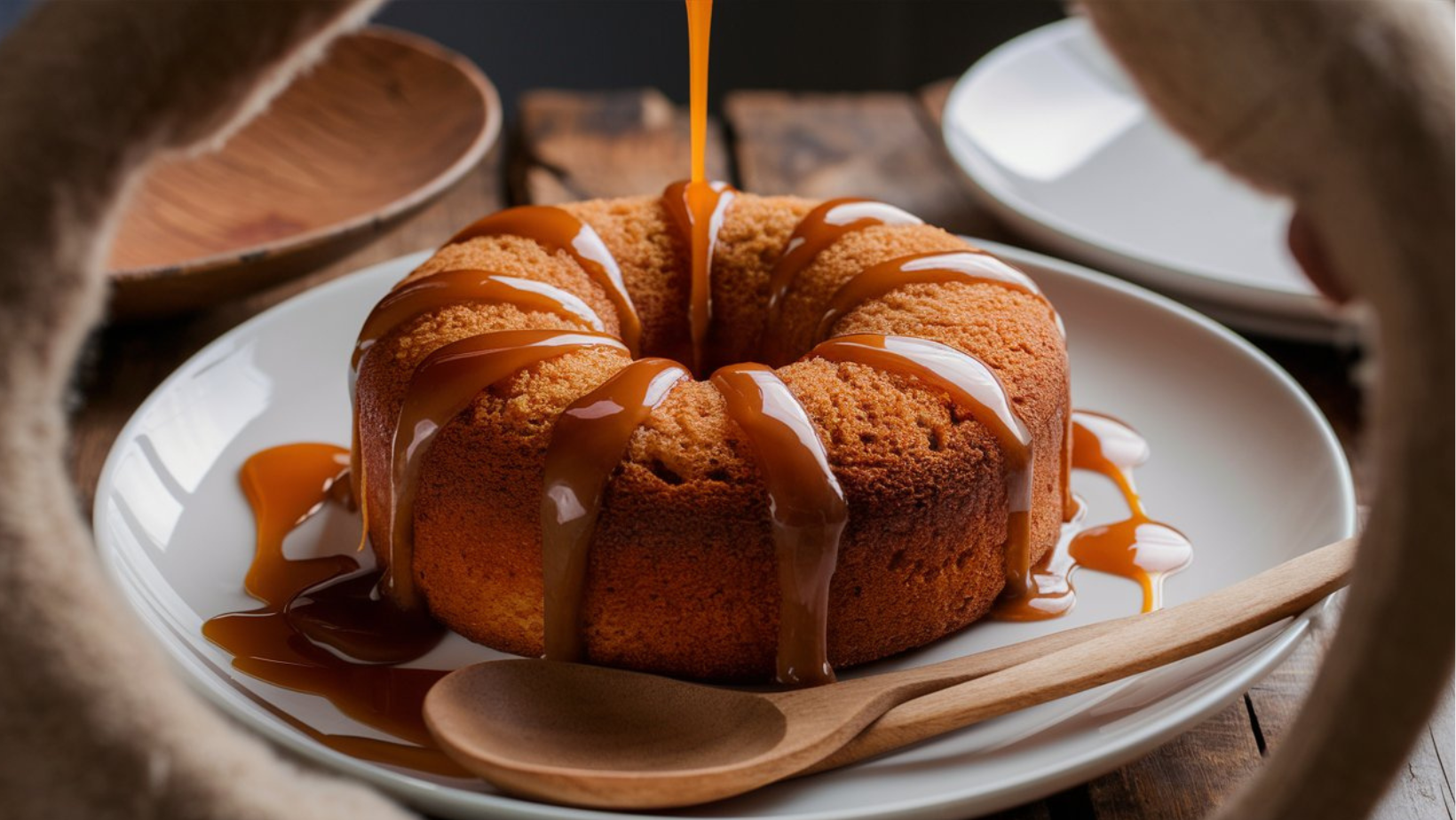Introduction to the Article on Kentucky Butter Cake
Dive into the delightful world of the Kentucky butter cake, a beloved Southern classic. This article explores every facet of making an authentic Kentucky butter cake. From basic ingredients and step-by-step instructions to serving tips and variations, this guide has it all. Whether you’re a seasoned baker or a novice, you’ll find invaluable insights and tips here.
Introduction to Kentucky Butter Cake
What is Kentucky Butter Cake?
The Kentucky butter cake is a cornerstone of Southern baking, known for its rich, buttery flavor and moist texture. This cake isn’t just a treat; it’s an experience. It’s soaked in a sweet, buttery sauce that enhances its soft crumb.
Ingredients and Preparation
At its core, the Kentucky butter cake is about simplicity. Key ingredients include all-purpose flour, granulated sugar, and plenty of unsalted butter. Each component brings out the cake’s luxurious texture and deep flavor. Here, the simplicity of the ingredients stands out, letting the buttery goodness shine.
Preparation starts with creaming butter and sugar together, and adding air to the batter. This step is crucial for a light, airy cake. Eggs are added one at a time, followed by dry ingredients and buttermilk. This method ensures a thick, smooth batter. Once baked, the cake is poked with holes and drenched in a rich vanilla butter syrup.
Historical Background
The origins of the Kentucky butter cake are not well-documented, yet its presence in Southern cooking is undeniable. Indeed, some stories suggest it was a blue-ribbon winner at state fairs, whereas others believe it was a happy accident at a local bake sale. Regardless of its origins, this cake has undeniably become a staple in Southern kitchens, loved for its straightforward charm and rich flavor.
Detailed Recipe Breakdown
Ingredients:
To embark on your journey to creating the perfect Kentucky butter cake, you’ll need the following ingredients, ensuring each is measured with precision for the best results:
| Ingredient | Quantity | Description | Part of Recipe |
|---|---|---|---|
| All-purpose flour | 3 cups | Provides the structure for the cake | Cake |
| Baking powder | 1 teaspoon | Helps the cake rise | Cake |
| Salt | 1/2 teaspoon | Enhances flavor | Cake |
| Unsalted butter, room temperature | 16 tablespoons (2 sticks) | Adds richness and flavor | Cake |
| Butter-flavored shortening | 1/2 cup | Improves texture and stability | Cake |
| Granulated sugar | 3 cups | Sweetens the cake | Cake |
| Large eggs, room temperature | 5 | Binds ingredients and adds structure | Cake |
| Vanilla extract | 2 teaspoons | Enhances flavor | Cake |
| Buttermilk | 1 cup | Moistens and tenderizes the cake | Cake |
| For the syrup: | |||
| Unsalted butter | 12 tablespoons (1 ½ sticks) | Adds richness and flavor | Syrup |
| Granulated sugar | 1½ cups | Sweetens the syrup | Syrup |
| Water | 1/3 cup | Dilutes and helps dissolve the sugar | Syrup |
| Vanilla extract | 1 teaspoon | Enhances flavor | Syrup |
Directions :
- Prepare Your Pan and Oven: Preheat your oven to 325°F (163°C). Grease and flour a bundt pan thoroughly to ensure no sticking and easy release after baking.
- Mix Dry Ingredients: In a large bowl, whisk together the flour, baking powder, and salt. Set aside. This mixture will help incorporate the rising agent evenly throughout the cake.
- Cream Butter and Sugar: In another large bowl, cream together the room temperature butter and shortening until smooth and pale. Gradually add the granulated sugar and continue beating until the mixture is fluffy and light. This process is crucial as it builds the base for a light, airy cake.
- Add Eggs and Vanilla: Beat in the eggs one at a time, ensuring each is fully incorporated before adding the next. Stir in the vanilla extract. Each egg works as an emulsifier, adding structure to the batter.
- Combine Dry and Wet Ingredients: Alternately add the dry ingredients and buttermilk to the butter mixture, starting and ending with the dry ingredients. Mix just until combined after each addition. The buttermilk enhances the cake’s moisture and tender crumb.
- Bake the Cake: Pour the batter into the prepared bundt pan and smooth the top. Bake in the preheated oven for about 75 minutes or until a cake tester comes out clean. The slow baking process helps the cake cook evenly and develop a golden crust.
- Prepare the Syrup: While the cake bakes, make the syrup by melting butter in a saucepan over medium-low heat. Add sugar and water and stir until the sugar has dissolved. Do not let it boil. Remove from heat and stir in vanilla extract.
- Finish with Syrup: Once the cake is done, remove it from the oven and immediately poke holes throughout with a skewer. Slowly pour the warm syrup over the cake, allowing it to seep into the holes and saturate the cake.
- Cool and Serve: Let the cake cool in the pan for 10 minutes, then invert onto a wire rack to cool completely. This resting period allows the syrup to further soak into the cake, making it incredibly moist.
Tips and Tricks for the Perfect Cake
Always ensure all your ingredients are at room temperature to help them mix more uniformly. For the syrup, pour slowly and evenly, ensuring that it doesn’t just pool on the surface but soaks into the cake. If desired, dust the cooled cake with powdered sugar for a decorative touch and added sweetness.
This detailed guide aims to equip you with all the information you need to bake a Kentucky butter cake that’s sure to impress.
Serving and Preservation
Best Practices for Serving
Once your Kentucky butter cake has cooled and soaked up all the delightful syrup, it’s ready to serve. Here’s how to present it perfectly:
- Serve at Room Temperature: The flavors and texture of the cake are best appreciated when it is served at room temperature. This allows the buttery syrup to be at its most flavorful.
- Add a Garnish: For an extra touch of elegance, sprinkle powdered sugar over the cake just before serving. Alternatively, a dollop of whipped cream or a scoop of vanilla ice cream can complement the rich buttery flavor.
- Use the Right Tools: When cutting the cake, use a serrated knife to get clean slices without compressing the cake’s tender crumb.
Storage Tips
Storing your Kentucky butter cake properly is crucial to maintaining its moisture and flavor:
- Cool Completely Before Storing: Ensure the cake is completely cool before wrapping it to prevent condensation that could make it soggy.
- Wrap Tightly: Wrap the cake tightly in plastic wrap or place it in an airtight container. This will keep the cake moist and prevent it from absorbing other flavors from your fridge or pantry.
- Refrigerate for Longevity: If you’re not serving the cake within a day, refrigerate it. The cake can be stored in the refrigerator for up to five days.
- Freezing for Extended Storage: For long-term storage, freeze the cake. Wrap it tightly in several layers of plastic wrap and then in aluminum foil. Properly stored, the cake can remain frozen for up to three months. Thaw overnight in the refrigerator before serving.
Following these tips will ensure that your Kentucky butter cake remains delicious and fresh, whether you’re enjoying it a day later or several weeks after baking.
Nutritional Information of Kentucky butter cake
Understanding the nutritional content of your Kentucky butter cake is crucial, especially if you’re mindful of your diet or serving it to guests with dietary restrictions. Here’s a breakdown of what each slice entails:
Overview of Nutritional Content
- Calories: A typical slice of Kentucky butter cake is quite calorie-dense, primarily due to the high content of butter and sugar. An average slice could contain approximately 400 to 500 calories.
- Fats: Given the significant amount of butter and butter-flavored shortening used, each slice is high in fats. You can expect around 20-25 grams of fat per slice, with a notable proportion of this being saturated fat.
- Carbohydrates: As with most desserts, the carbohydrate content is high due to the flour and sugar. Each slice may contain about 50-60 grams of carbohydrates.
- Sugars: The cake and its syrup contribute to a high sugar content, potentially adding up to 30-40 grams of sugar per serving.
- Proteins: There is a modest amount of protein in the cake from the eggs and buttermilk, roughly 5-6 grams per slice.
Dietary Considerations
For those watching their caloric intake or managing dietary restrictions like low-fat or low-sugar diets, Kentucky butter cake might be best enjoyed in small portions. It’s also worth noting that this cake contains gluten from flour and dairy from butter and buttermilk, which might not be suitable for everyone.
Given these nutritional considerations, it’s essential to balance enjoyment of such a decadent dessert with a mindful eating approach. Enjoying a slice on a special occasion or sharing with friends and family can make indulging in a Kentucky butter cake a delightful treat without overdoing it.
Variations of the Kentucky butter cake Recipe
Exploring variations of the traditional Kentucky butter cake recipe can add excitement and cater to different dietary preferences or simply offer a new twist on an old favorite. Here’s how you can adapt the classic recipe:
Different Flavorings and Additions
- Vanilla Bean Paste: Firstly, replace vanilla extract with vanilla bean paste for a more intense and rich vanilla flavor. This substitution also adds tiny specks of vanilla seeds to your cake, enhancing both flavor and appearance.
- Citrus Zest: Additionally, incorporate the zest of an orange or lemon into the batter to add a bright, citrusy note. This zest cuts through the richness of the butter, offering a refreshing flavor contrast.
- Spices: Moreover, adding a pinch of cinnamon, nutmeg, or cardamom can introduce a warm spiciness. These spices complement the buttery taste beautifully, enhancing the cake’s overall flavor profile.
- Nutty Addition: Furthermore, mix in finely chopped nuts such as pecans or walnuts for added texture. This nutty flavor pairs well with the cake’s buttery profile, providing a delightful crunch.
- Sugar-Free Alternatives: Lastly, for those looking to reduce sugar intake, substitute granulated sugar with a granulated sugar substitute that measures like sugar. Be sure to check conversion rates as they can vary by brand.
This provides a direct example of a popular variation of Kentucky butter cake, enriching the section with a specific recipe.
Alternative Dairy-Free and Gluten-Free Versions
- Dairy-Free Modifications: Use dairy-free butter and suitable plant-based milk, like almond milk or oat milk, in place of buttermilk. Ensure that the butter substitute is suitable for baking.
- Gluten-Free Adaptation: Substitute the all-purpose flour with a gluten-free flour blend designed for baking. Check the mix includes a binding agent like xanthan gum to prevent the cake from crumbling.
Incorporating Healthy Elements
- Whole Wheat Flour: Replace half of the all-purpose flour with whole wheat flour to add fiber and a slightly nuttier flavor to your cake.
- Reduced Fat Option: While it’s challenging to reduce all the butter in a butter cake without affecting the texture significantly, you can experiment with reducing the amount by using apple sauce or yogurt for part of the butter. This will also add moisture to the cake.
Each of these variations allows you to customize the Kentucky butter cake to suit different tastes and dietary needs while maintaining the essence of what makes this cake a beloved dessert.

